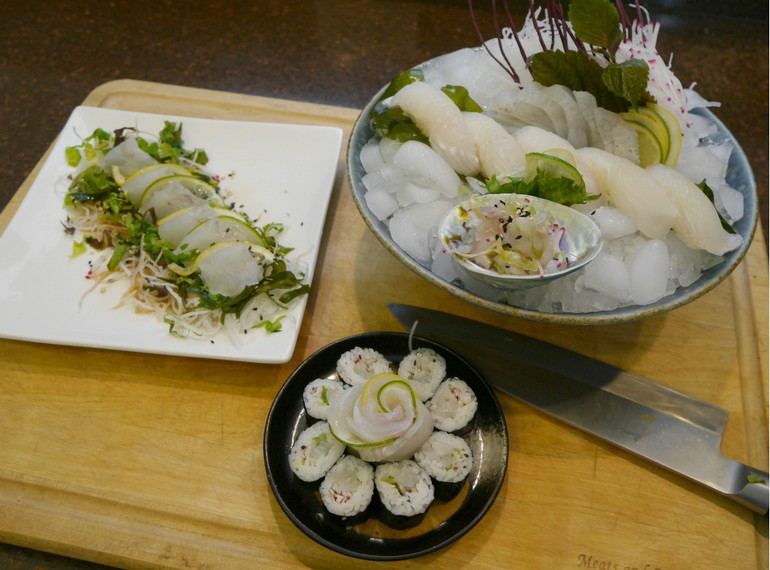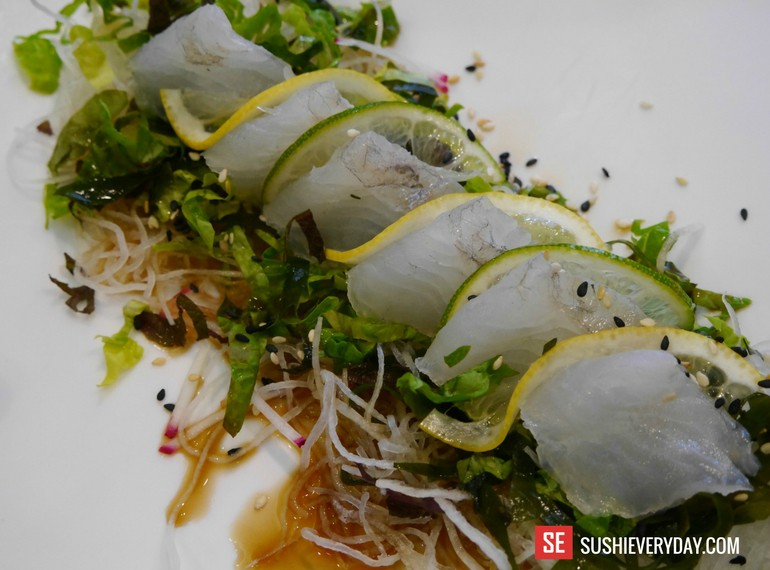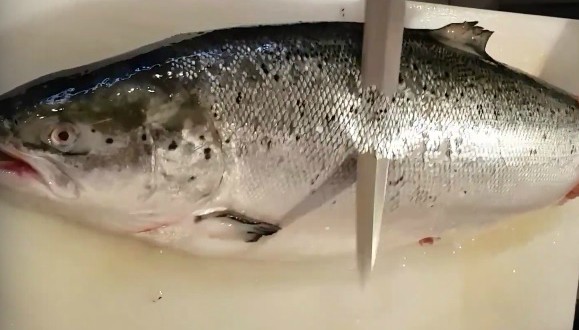
Fluke Sushi and Sashimi
Fluke sushi, also known as Hirame in Japanese, is very popular in sushi restaurants, especially in the Northeast where it’s also a targeted game fish. Fluke has beautiful white meat. The top side fillet has a translucent look, in contrast to the bottom fillet. The flavor is subtle and smooth, and not over powering compared to other stronger fish like, salmon. This is a great item to order if you’re a first time sashimi eater.

If you never had raw fish before, fluke is a good choice before jumping into something more adventurous like Uni or Ikura (salmon roe). Those items pack a high intensity of ocean flavor that might freak you out if you aren’t ready.
Fluke is very mild so it’s a great fish to test your culinary skills with, besides just making nigiri and sashimi. Personally, I like it with a little bit of Kimchee Base, it’s a great sauce for enhancing the flavor but not too overpowering. You can try making a sushi roll, chirashi bowl, sashimi salad, etc. Experiment for yourself. Below are just some ideas.


The side strips, Engawa in Japanese, on the sides of a fillet are often discarded or used as bait. But these are actually great for sashimi. Sushi chefs never waste this part. The texture is slightly crunchy and has a bouncy chew to it. I suggest cutting it up into smaller pieces and mixing it with green onion and ponzu or Kimchi Base.


You can also make a maki roll out of it like the photo below:

Fluke is Easy to Clean
Don’t be intimidated by the fish profile, it’s actually a very easy fish to fillet. There are many ways to clean it depending on how it’s going to be used. In the video, I removed the head and eviscerated it first before filleting it into 4 sections. By gutting it initially, I ensure I don’t cut into the stomach or gall bladder when it comes to filleting. The worst thing to do is break the gall bladder because it’ll ruin the meat (It’s extremely bitter).
The way I did it is definitely not the fastest, but in my opinion, its one of the most effective method for sushi application because: (1) I don’t risk cutting into the stomach or spleen (2) by splitting it into quarters, I reduce the risk of cracking the meat compared to if I were to fillet it into one whole side piece.(3) Also, you don’t need a long thin fillet knife for this method, even a chef knife will work.

There are certainty other videos on Youtube that show faster ways to fillet, however, it does not mean it is applicable to sushi standards. Just keep in mind, if you plan on cleaning your fish for raw consumption, please eviscerate it first, unless you enjoy eating stomach bacteria and gall bladder juice with your sushi.
Must I Scale it?
Flatfish in general, are hard to scale, so many chefs will use a technique called, Sukibiki. This is a technique by using a knife, usually a Yanagiba, to carefully cut the layer of scales off without cutting the actual skin. Sukibiki is a great technique for removing fish with very small stubborn scales. The second reason is that it reduces trauma to the fillet compared to using a rough scaler. For example, salmon has very fragile meat and cracks easily, so the less physical contact it has, the better. The third reason is that some chef want to serve their fish with the skin attached minus the scales. So it really depends on what type of fish you’re working with and how you want to serve it.

My thoughts on scaling? Personally, scaling a fish makes it much easier throughout the whole sushi making process. As far as using the Sukibiki technique, it’s not something I do often because I generally don’t eat sushi with the skin on. And from my own experience, if you’re gentle with a scaler, you’ll do very little damage to the flesh. It all depends on size and type of fish you’re working on.
Watch Video!
Part 2
Cool Facts:
Where found: Atlantic Ocean and Gulf of Mexico.
Scientific Name: Platichthys dentatus (This is Fluke in the NE)
IGFA World Record: 22lbs 7oz – Caught in Montauk, NY in 1975.
If you want to learn everything about Fluke/Flounder fishing, check out John Skinner’s book: Fishing for Summer Flounder. The guy is a legend.


